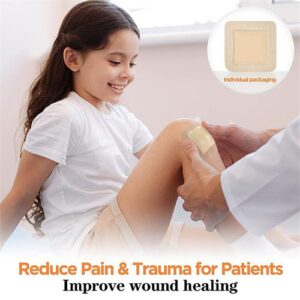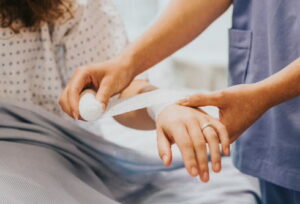Wound dressings play a crucial role in promoting effective wound care. Whether it’s a minor cut, surgical incision, or a chronic wound, choosing the right type of dressing is essential for proper healing and minimizing the risk of complications.
In this article, we will explore the different types of wound dressings available and discuss their specific uses, characteristics, and precautions. By understanding the diverse range of dressing options, you can make informed decisions to ensure optimal wound management and facilitate the healing process.

Silicone Foam Wound Dressing
Silicone foam wound dressings are specifically designed to manage wounds with moderate to heavy exudate while providing protection and cushioning. These dressings excel in maintaining a moist wound environment, which is essential for promoting optimal healing conditions.
Key characteristics of silicone foam wound dressings include their soft and conformable nature, allowing for easy application on irregular wound edges and surfaces. They are also non-adherent, meaning they won’t stick to the wound bed and cause unnecessary trauma during dressing changes. This feature contributes to patient comfort and reduces the risk of disrupting the healing process.
However, it’s important to note that silicone foam wound dressings may not be suitable for dry wounds as they require an appropriate level of exudate to function effectively. In cases where the wound is dry or has minimal exudate, alternative dressing options should be considered.
In certain instances, a secondary wound dressing may be necessary to secure the silicone foam dressing in place, particularly when dealing with highly mobile areas or wounds with excessive movement. This additional layer helps ensure proper adherence and prevents the dressing from shifting or dislodging.
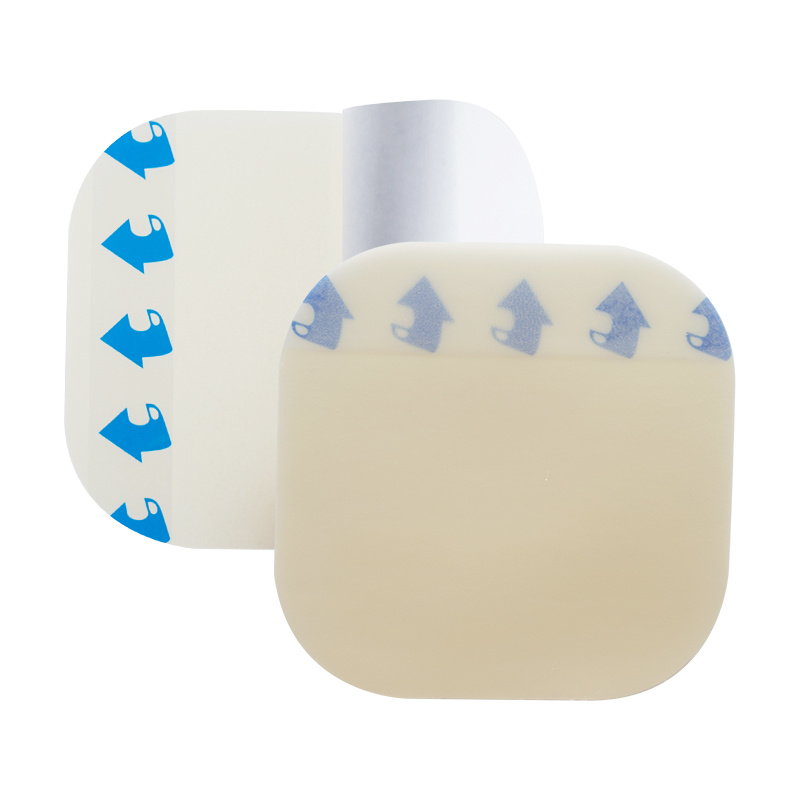
Hydrocolloid Wound Dressing
Hydrocolloid wound dressings are commonly used for partial to full-thickness wounds and offer several benefits in wound management, including autolytic debridement.
One of the key characteristics of hydrocolloid wound dressings is their occlusive nature. These dressings create a barrier that seals the wound, protecting it from external contaminants and promoting a moist wound environment. The occlusive property helps to create an optimal environment for wound healing by preventing excessive moisture loss.
Hydrocolloid wound dressings are also self-adhesive, allowing for easy application and secure fixation to the wound site. The adhesive properties ensure that the dressing stays in place, even in areas prone to movement or friction.
In terms of exudate management, hydrocolloid wound dressings have the ability to absorb moderate amounts of exudate while maintaining their integrity. This helps in keeping the wound bed clean and preventing excessive moisture buildup, which can hinder the healing process.
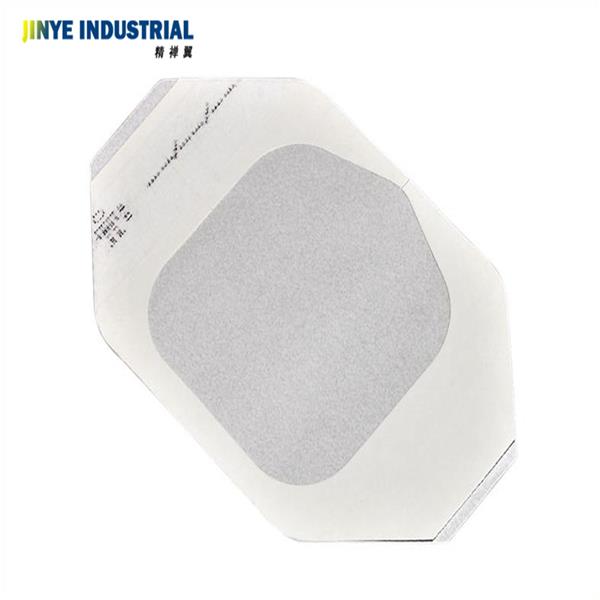
Transparent Film Wound Dressing
Transparent film wound dressing is widely used for the management of superficial wounds, as well as for protecting IV sites. They offer valuable benefits in terms of wound protection and prevention of contamination.
These wound dressings are characterized by their thin and transparent nature, allowing for easy visualization of the wound without the need for frequent dressing changes. Transparency enables healthcare professionals to monitor the wound’s progress and assess any signs of infection or healing.
A notable advantage of transparent film dressings is their breathability, which helps to maintain a favorable environment for wound healing. The dressings allow the exchange of oxygen and moisture vapor, promoting adequate airflow to the wound site.
Transparent film wound dressings are particularly suitable for superficial wounds where there is minimal exudate. They serve as a protective barrier against external contaminants, such as dirt and bacteria, reducing the risk of infection and promoting a sterile environment.
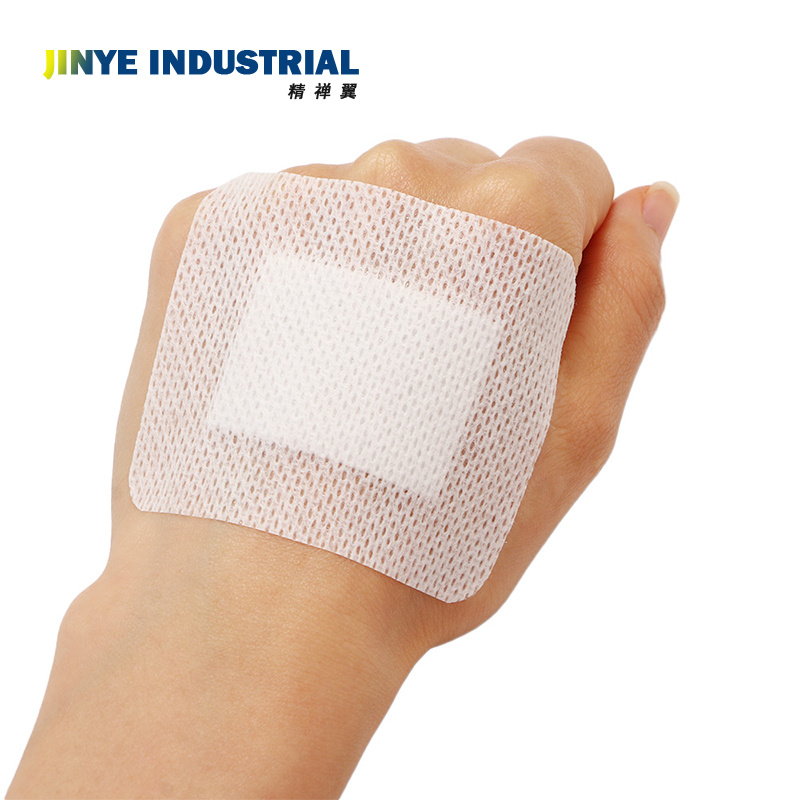
Medical Sterile Wound Dressing
Medical sterile dressings are specifically designed for post-surgical wounds and other situations that require a sterile environment. They offer essential protection and promote optimal healing conditions.
The primary use of medical sterile dressings is for post-surgical wounds, where maintaining a sterile environment is crucial for preventing infections and facilitating proper healing. These dressings provide a physical barrier that shields the wound from external contaminants, such as bacteria and dirt.
One of the key characteristics of medical sterile dressings is their sterility. They are manufactured and packaged in a sterile environment, ensuring that they are free from microorganisms that could potentially cause infection. This characteristic makes them suitable for use in healthcare settings, where maintaining aseptic conditions is paramount.
Medical sterile dressings are absorbent, and capable of absorbing exudate from the wound surface, which helps to keep the wound bed clean and dry. By managing exudate, these dressings contribute to creating an optimal healing environment.

Silicone Scar Wound Dressing
Silicone scar dressings are specifically designed for the management of hypertrophic scars and keloids. They offer unique benefits in promoting scar healing and minimizing the appearance of raised scars.
The primary use of silicone scar dressings is for managing hypertrophic scars and keloids, which are characterized by excessive scar tissue formation. These dressings help to flatten and soften the scar, improving its overall appearance and texture.
One of the key characteristics of silicone scar dressings is their self-adhesive nature. They can easily adhere to the surrounding skin itself, providing continuous contact with the scarred area. This adhesive property ensures that the dressing remains in place, even during movement or daily activities.
Silicone scar dressings also promote moisture balance in the scar tissue. They create a microclimate over the scar, which helps to regulate moisture levels and maintain an optimal environment for scar healing. By maintaining moisture, these dressings can effectively reduce scar tension and prevent excessive dryness or moisture buildup.

Transparent PU Wound Dressing
Transparent PU dressings are commonly used for the management of minimally exuding wounds, superficial abrasions, and skin tears. They offer valuable benefits in terms of wound protection and promoting optimal healing conditions.
The primary use of transparent PU wound dressings is for wounds that have minimal exudate. These dressings provide a protective barrier that shields the wound from external contaminants, such as dirt and bacteria while allowing for easy visualization of the wound.
One of the key characteristics of transparent PU wound dressings is their transparency, which enables healthcare professionals to monitor the wound’s progress without the need for frequent dressing changes. This characteristic is particularly beneficial for wounds that require regular assessment, such as superficial abrasions and skin tears.
Transparent PU wound dressings are also breathable, allowing for the exchange of oxygen and moisture vapor. This feature helps to maintain a favorable environment for wound healing by facilitating adequate airflow to the wound site.
It’s important to note that transparent PU wound dressings may not be suitable for heavily exuding wounds. In such cases, alternative dressing options should be considered to ensure effective management of excessive exudate. Additionally, transparent PU dressings may require more frequent changes compared to other dressings designed for highly exuding wounds.

Hydrogel Blister Plaster
Hydrogel blister plasters are specifically designed for the prevention and treatment of blisters. They offer effective protection, and soothing relief, and support the healing process.
The primary use of hydrogel blister plasters is in the prevention and treatment of blisters. These dressings create a moist environment that helps to reduce friction and pressure on the skin, preventing the formation of blisters. They also provide a cushioning effect, offering added protection to existing blisters.
One of the key characteristics of hydrogel blister plasters is their moisture-retaining property. The moist environment created by these dressings helps to cool and soothe the affected area, providing relief from pain and discomfort. The cooling sensation can also help alleviate inflammation and promote the healing process.
Hydrogel blister plasters are particularly beneficial for blister healing as they create an optimal environment that supports the natural healing process. The moisture helps to soften the skin, allowing the blister to heal and new skin to form more efficiently.
It’s important to note that hydrogel blister plasters should not be used on infected wounds. If there are signs of infection, such as increased redness, swelling, or pus, medical attention should be sought. Additionally, they should not be used on open wounds, as they are specifically designed for blister prevention and treatment of burn wounds.
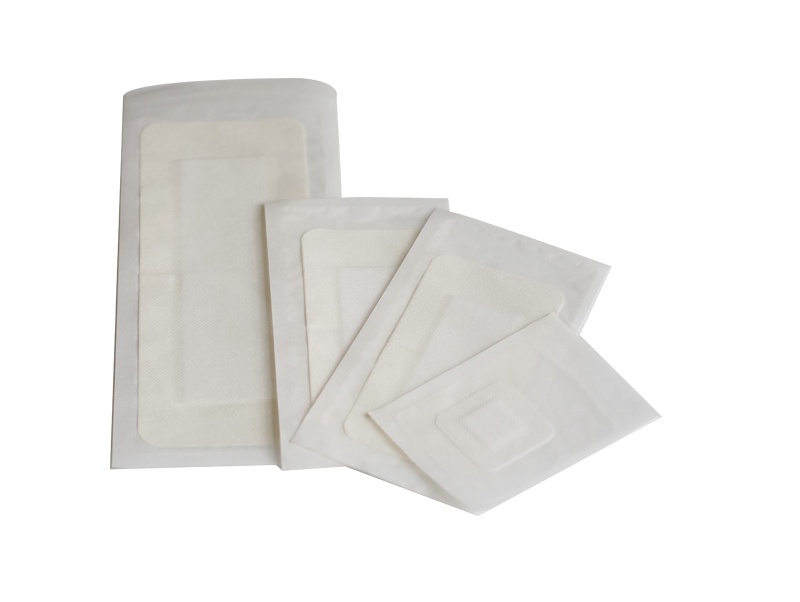
Non-Woven Wound Dressing
Non-woven dressings are commonly used for the management of light to moderately exuding wounds, including abrasions and ulcers. They offer important characteristics that contribute to effective wound care and can promote wound healing under optimal healing conditions.
The primary use of non-woven dressings is for wounds that have light to moderate levels of exudate. These dressings are designed to absorb and retain the excess moisture produced by the wound, maintaining a balanced environment for healing. Their absorbent nature helps to prevent maceration and keep the wound bed clean and dry.
Non-woven dressings are characterized by their non-adherent properties. This means that they do not stick to the wound bed, minimizing the risk of trauma and pain during dressing changes. The non-adherent feature allows for gentle removal, promoting patient comfort and reducing the potential for further tissue damage.
One of the key advantages of non-woven dressings is their soft and conformable nature. They can easily adapt to the contours of the wound site, ensuring proper coverage and contact with the affected area. The softness of these dressings adds an extra layer of comfort for patients.
It’s important to note that non-woven dressings may require a secondary dressing, such as a bandage or tape, to secure them in place. This ensures proper adherence and prevents shifting or displacement during daily activities.
When using non-woven dressings, it is essential to monitor the wound for any signs of infection, such as increased redness, swelling, or discharge. Prompt medical attention should be sought if infection is suspected or if there is a lack of improvement in the wound’s healing progress.

Seaweed Salt Silver Ion Wound Dressing
Seaweed salt silver ion dressings are specifically designed for the management of infected wounds, chronic wounds, and diabetic foot ulcers. These dressings offer unique characteristics that help combat infection, absorb exudate, and promote the healing process.
The primary use of seaweed salt silver ion dressings is for infected wounds, chronic wounds, and diabetic foot ulcers. These dressings contain silver ions, which have antimicrobial properties and can help reduce bacterial load in the wound. By combating infection, they create a favorable environment for healing to occur.
One of the key characteristics of seaweed salt silver ion dressings is their ability to absorb wound exudate. Exudate refers to the excess fluid being produced by the wound, and excessive exudate can delay the healing process. These wound dressings effectively absorb excess moisture, maintaining a balanced moisture level in the wound bed.
Seaweed salt silver ion dressings promote the normal healing process by creating an optimal environment for wound repair. The antimicrobial properties of the silver ions help reduce the risk of infection, while the absorbent nature of the dressings aids in keeping the wound clean and free from excessive moisture. By maintaining a suitable healing environment, these dressings support the natural healing process.
It is important to use seaweed salt silver ion dressings under professional guidance, especially for infected wounds, chronic wounds, and diabetic foot ulcers. Healthcare professionals can assess the wound condition and determine the appropriate duration and frequency of dressing changes. Additionally, individuals should monitor for any signs of allergic reactions, such as redness, itching, or rash, and seek medical attention if such reactions occur.
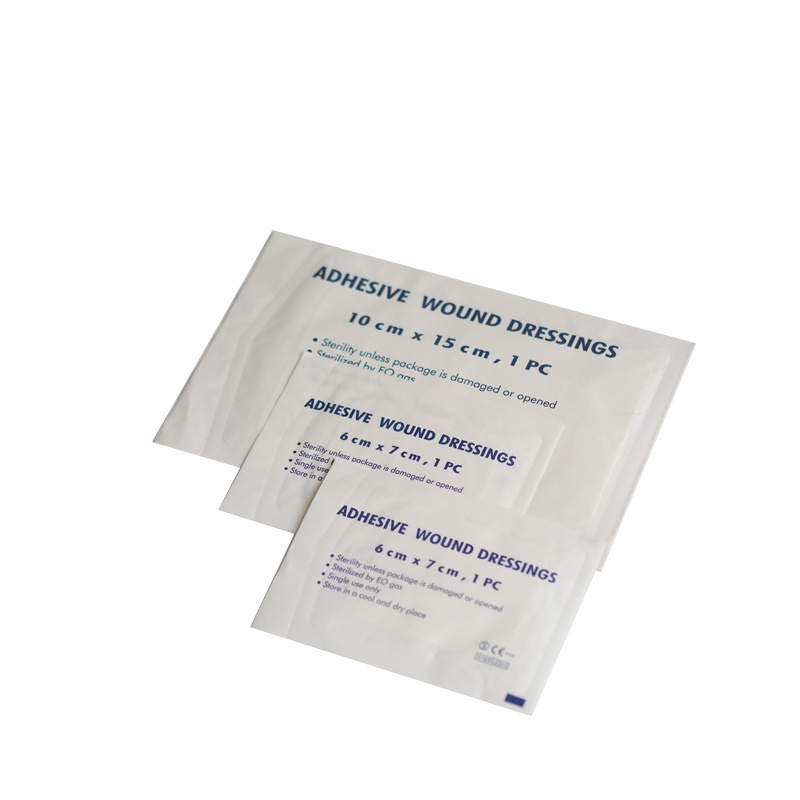
Adhesive Wound Dressing
Adhesive wound dressings are commonly used for the management of minor cuts, abrasions, and post-surgical incisions. These wound dressings offer convenience, and protection from external contaminants, and support the wound-healing process.
The primary use of adhesive wound dressings is for minor cuts, abrasions, and post-surgical incisions that do not require extensive dressing changes. These dressings are designed with a self-adhesive backing, allowing for easy application and secure placement over the wound.
One of the key characteristics of adhesive wound dressings is their ability to protect the wound from external contamination. The adhesive layer of the wound is moist and creates a barrier that helps to prevent bacteria, dirt, and other contaminants from entering the wound site. This protection is crucial for minimizing the risk of infection and supporting the healing process.
Adhesive wound dressing also allows for wound healing to occur naturally. They provide a protective environment that promotes moist wound healing, allowing for the optimal migration of cells and the formation of new tissue. The dressings maintain a moist environment that is conducive to the wound-healing process, without causing excessive dryness or maceration.
It is important to monitor adhesive wound dressings for any signs of infection, such as increased redness, swelling, warmth, or discharge. Prompt medical attention should be sought if there are signs of infection. Additionally, adhesive wound dressings may not be suitable for heavily exuding wounds, as they may not have sufficient absorbency to manage excessive moisture. In such cases, alternative dressing options should be considered.
Conclusion
In summary, choosing the right wound dressing is a critical step in promoting optimal wound healing. By understanding the characteristics, uses, and precautions of various dressings, healthcare professionals and individuals can make informed decisions to support the healing process. Remember to consult with healthcare professionals for personalized advice and guidance, as they possess the expertise to assess individual wound needs for advanced dressings.

